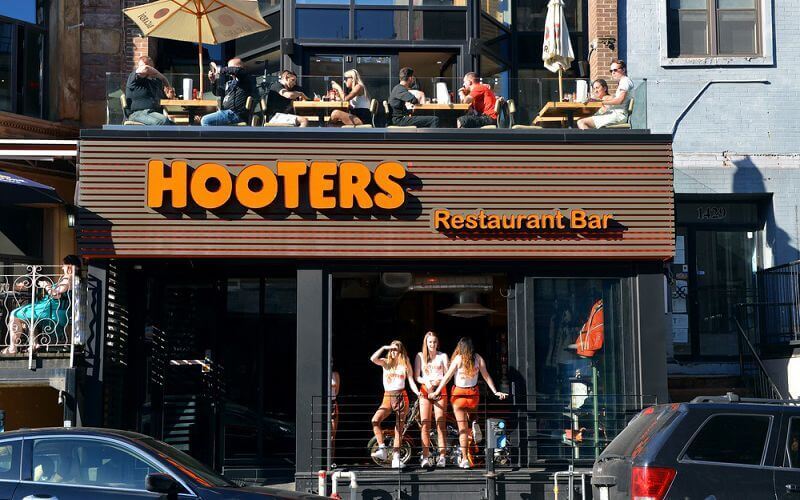Restaurant workers deserve fair wages and a safe working environment.
Behind the warm smile of your favorite restaurant’s waitress and the friendly welcome of the host lies a dark truth about how they earn their wages. The fortunate ones from the seven states of California, Oregon, Washington, Nevada, Montana, Alaska and Minnesota get paid the state minimum wage. Any tips they earn is additional income, the way it should be. In the remaining 43 of America’s 50 states, the unfortunate workers rely on tips to cover the difference between the subminimum cash wage — mandated by the federal Fair Labor Standards Act (FLSA) —and the state minimum wage.
At a quick glance, the established business practice in these 43 states may sound fair, even business-friendly. A careful analysis of the situation will expose the harsh facts of the restaurant industry.
The FLSA-mandated subminimum wage is a paltry $2.13 per hour for tipped workers, a figure that was established in 1991 and has not been revised since. On average, the dollar has experienced an inflation of 2.28% between 1991 and 2017. In other words, prices are 79.7% more expensive than they were in 1991. Even the federal minimum wage has moved up from $4.25 in 1991 to $7.25 today. But the FLSA subminimum wage for tipped workers has remained stagnant for 26 years.
In 17 of the 43 states, the subminimum wage is the FLSA-mandated $2.13. In the remaining 26 and the District of Columbia, the subminimum wage is higher than $2.13 but lower than the state minimum wage. Restaurant workers are expected to earn this difference from tips.
Including any tips that restaurant workers earn in the minimum wage essentially expects customers to subsidize the restaurant business while exposing the workers to the vagaries of the patrons. These workers are not only at the mercy of customers, but rather their employers to treat them fair.
Pitfalls of including tips as part of minimum wage
In an ideal world, restaurant employers would treat their workers in a fair and equitable manner. The reality is far from ideal for most restaurant workers. Even if we consider incidents of labor trafficking as not the norm, research has determined that waiting tables is a highly stressful job.
Stories of bad tipping by unreasonable and highly demanding patrons are plenty. Creating a cash flow problem for those who can ill afford it, relying on tips exacerbates the economic issues these workers typically face. With no room for slack, waiters and waitresses must turn on their charming smile and put their best foot forward with the next customer, no matter how they were treated by the previous one.
Most restaurants add on a standard gratuity, typically between 18% and 20%, for parties of six or more. One would think that waiters ought to be guaranteed tips at least when they serve large groups. Sadly, it is not safe to assume that the gratuity will make it into the hands of the waiter as tips. Restaurants can choose not to pass on some or all the gratuity to the waiter.
When tips are paid along with the food and drinks bill and charged to a credit card, the restaurant can choose to deduct any fees owed to the credit card company from the tip due to the employee. This workplace fairness guide explains the complexities of how the wage is computed for tipped employees and what rights they have.
There aren’t many jobs where you are expected to pour your heart out, only to find out that you have the short end of the stick when it comes to being paid.
Even more disconcerting is the sexual harassment they undergo as part of their job. In a 2014 study on sexual harassment in the restaurant industry, a staggering 66% experienced harassing behavior from management, 80% from co-workers and 78% from customers. Women and transgender workers are particularly more susceptible to sexual harassment, the study points out.
If the harassment that restaurant workers endure in a normal environment is not enough, the 1990s saw the advent of “breastaurants,” a concept pioneered by Hooters, which amplify the sexual harassment that waitresses could face in the line of work. To wait tables predominantly patronized by men, waitresses are required to dress skimpily, wear makeup, mascara and more. Hooters girls are also required to sign an acknowledgement that they would accept sexual innuendo as part of their work. This business model exploiting women, particularly young girls, has been emulated by several new franchises, each one vying to differentiate themselves with practices that further demean women.
Alternate models to tipping
Restaurant workers, especially waiters and waitresses, can have a better work life if tips are decoupled from their wages. Although this may challenge a longstanding tradition of the American way of life, there are restaurants that have started adopting alternate models to tipping.
Packhouse Meats in Newport, Kentucky adopted a no-tipping policy, while guaranteeing its employees an hourly wage of $10 and offering them a chance to make more by earning 20% of their total sales in a shift. When Packhouse Meats switched to no-tipping service, it received a lot of criticism from ill-informed customers who thought the company was exploiting its workers. It took courage from the management to stand their ground and educate patrons that their workers were treated more like partners than employees.
More than 20 upscale restaurants nationwide have adopted a no-tipping service model. An all-inclusive price for menu items, calling out service charges separately or a hybrid model — these offer three alternative options to the well-established tipping custom. While a no-tipping model may work out in an upscale restaurant, how will it play out in smaller establishments?
Cicero’s Pizza: A family owned self-serve restaurant
Cicero’s pizza is a popular family-owned small business in San Jose/Cupertino boundary in California. Tipping is optional in this self-serve restaurant that employs about 35 people. I spoke to Rik Jones, co-owner of Cicero’s, to understand the business practices that have allowed it to be successful and to hear his take on the no-tipping model for restaurants.
Jones, who majored in economics, is knowledgeable, hardworking and humble with no airs about him. He was cleaning the restaurant and getting it ready for the day’s business as we had our chat. Not afraid to roll up his sleeves anytime there is a need, he believes that the work ethic of the owners and managers will directly influence workers’ behavior.
 Pointing out that tips are a good incentive for waiters to work hard, he agreed that the cons outweigh the pros. Acknowledging the sexual harassment issues, he also highlighted the possibility of unscrupulous customers seeking favors from waiters, compromising the integrity of the workplace.
Pointing out that tips are a good incentive for waiters to work hard, he agreed that the cons outweigh the pros. Acknowledging the sexual harassment issues, he also highlighted the possibility of unscrupulous customers seeking favors from waiters, compromising the integrity of the workplace.
Cicero’s is successful because it treats employees the way they like to be treated — and by knowing its customers, understanding their needs and providing them a great product at a great value. Having successfully navigated the past increases in minimum wage, it is my sense that Cicero’s is ready to tackle the challenges with rising wages as California heads steadily toward $15 per hour by 2022.
Fair wages and a safe workplace
Tipping is a custom that will not be easy to shed in America. However, it is also clear that the seemingly nice gesture has more ills associated with it, exposing restaurant workers to unsafe and unfair working conditions. It is time for restaurants to seriously consider a no-tipping model.
And until such a time when the tipping revolution comes to pass, there is no reason for the FLSA-mandated subminimum wage to be any different than the state minimum wage. It is only fair that workers are paid what is due to them by their employers, without having to bank on tips.
The views expressed in this article are the author’s own and do not necessarily reflect Fair Observer’s editorial policy.
Photo Credit: bezikus / Shutterstock.com
Support Fair Observer
We rely on your support for our independence, diversity and quality.
For more than 10 years, Fair Observer has been free, fair and independent. No billionaire owns us, no advertisers control us. We are a reader-supported nonprofit. Unlike many other publications, we keep our content free for readers regardless of where they live or whether they can afford to pay. We have no paywalls and no ads.
In the post-truth era of fake news, echo chambers and filter bubbles, we publish a plurality of perspectives from around the world. Anyone can publish with us, but everyone goes through a rigorous editorial process. So, you get fact-checked, well-reasoned content instead of noise.
We publish 2,500+ voices from 90+ countries. We also conduct education and training programs
on subjects ranging from digital media and journalism to writing and critical thinking. This
doesn’t come cheap. Servers, editors, trainers and web developers cost
money.
Please consider supporting us on a regular basis as a recurring donor or a
sustaining member.
Will you support FO’s journalism?
We rely on your support for our independence, diversity and quality.







